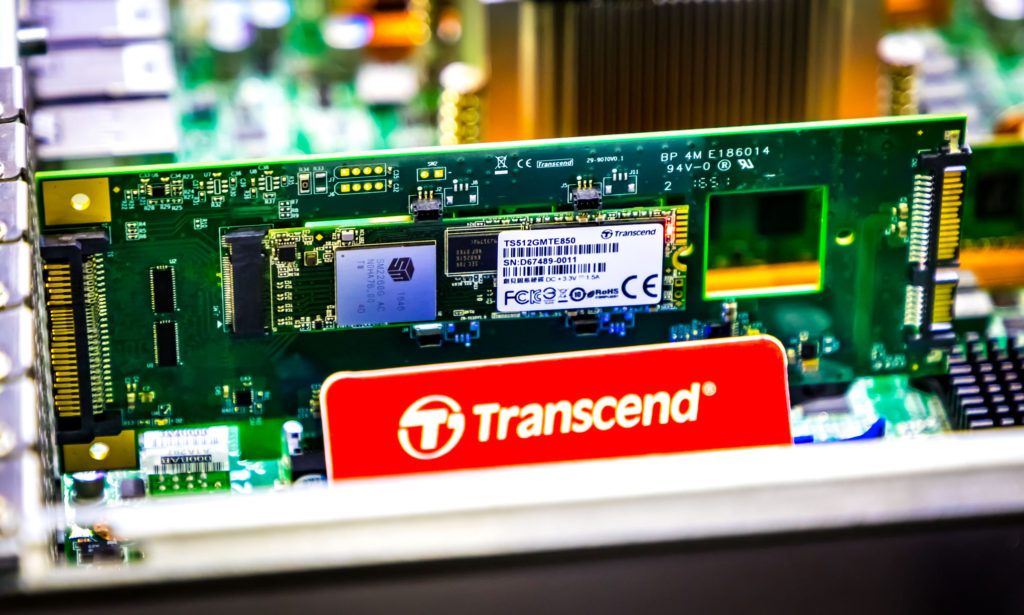Probably one of the most amusing things that we are seeing at Computex 2017 is the fact that several manufacturers are sporting very similarly constructed SSDs, with different stickers. It is reminiscent of how the industry started with many 3rd party sellers simply rebranding Intel’ first X-25M SATA 2 SSD almost 10 years ago.
All have a very common theme. The controller is the SMI SM2260 and the memory in use is Micron’ newest gen 2 3D NAND flash memory, something one might find unusual of new manufacturers with no pedigree whatsoever in SSDs, but so be it. Transcend is no new comer to SSDs and neither is ADATA but they sport this configuration, just as Asian companies named Eudar, ACPI and Anacomda do as well.
A bit of a disappointment, in fact, is that we have entered an age where little knowledge of the SSD being displayed is known to the manufacturer. Although ADATA and Transcend had no problem whatsoever describing their SSD components, the remainder of companies sporting these speedy PCIe NVme SSDs had no idea what components their specific SSDs contained
, despite us speaking with their ‘SSD experts’.
Performance of the SSDs is also very similar, read data transfer speeds peaking around 2500MB/s with write speeds at 1100MB/s with a little over 250,000 read IOPS, for the higher capacities, where lower capacities will have slightly less performance. They all support RAID engine and LDPC as well as Data Shaping.
 The SSD Review The Worlds Dedicated SSD Education and Review Resource |
The SSD Review The Worlds Dedicated SSD Education and Review Resource | 


Intel has for years been starving the mainstream cpus of pcie 3.0 lanes.
Everybody sees pcie 3.0 x4 as max for mainstream ssd because that what most mainstream cpu can handle with a pcie 3.0 x16 gfx card connected.
Instead of leading the market Intel always has an angle to try to hold back the market by crippling their product because they think they make more money that way but in fact they are hurting themselves and leave themselves open to competitors.
Suddenly AMD shows us what real cpu power looks like and are stacking pci lanes in overflow in all cpu models, no crippling. This will open up a new future for ssd and force Intel to follow AMD and not be so gritty.
Also when pcie 4.0 drops and a new generation cpus with an overflow of lanes and bandwidth is available in mainstream we will enter a new ssd era. Overflowing bandwidth creates innovation and maybe we will see more new start ups making ssd controllers for the independent manufacturers so we can get more variation in the future.
This says everything about Intel from a “pcie 4.0 delay may empower next-gen alternatives” article:
“Delays in computer industry standards are not normally a big deal. It’s common knowledge that such things take time to get right, but almost all major hardware companies except Intel are starting to work together on alternate plans”
https://www.techrepublic.com/article/new-pci-express-4-0-delay-may-empower-next-gen-alternatives/
“Everybody sees pcie 3.0 x4 as max for mainstream ssd because that what most mainstream cpu can handle with a pcie 3.0 x16 gfx card connected.”
Ooooorrrr…. because mainstream is m.2 like every SSD in this article and that only provides an x4 interface per spec. PCIe 4 would be somewhat nice though I wouldn’t mind if something came along with a faster refresh cycle.
Much like the vast array of Phison/Toshiba SATA drives manufactured by Toshiba
out there with different labels………………